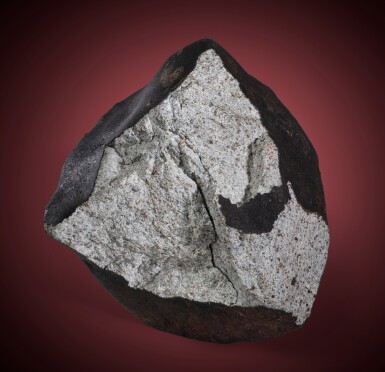
Gatuto Meteorite
No reserve
Lot Closed
July 27, 02:32 PM GMT
Estimate
6,500 - 8,500 USD
Lot Details
Description
Gatuto Meteorite
Chondrite – L6
Central Kenya (0° 34' 12"S, 37° 17' 24"E)
109 x 99 x 105 mm (4¼ x 4 x 4 in). 1.776 kg (3.9 lbs).
On April 24, 2020 at 8:27 PM multiple witnesses straddling Earth’s equator near the village of Gatuto, Kenya witnessed a bright incandescent streak of light slicing through the night sky. Five minutes later three detonations were punctuated by a final bang and rumble. Josphat Gakere experienced these phenomena outside his home — which was nearly the last thing he would ever experience, as shortly thereafter he witnessed a meteorite impact just 15 meters from where he was standing. Around the same time, Mary Wamburu was at home preparing what was nearly her last supper when she was startled by a sharp blast in the next room and noticed a hole in the roof and a shattered rock on the concrete floor. In all, 25 kilograms of Gatuto meteorites were recovered.
75% of the surface area of the specimen now offered is draped in a dark fusion crust — the result of the meteorite’s fiery descent through Earth’s atmosphere. This specimen experienced a serendipitous impact break which provides a broad reveal of its mottled gray matrix. This is a quintessential example of a meteorite which features the sought-after contrast between matrix and crust. A small cut face from where a sample had been removed for scientific analysis provides a more highly resolved view of the myriad inclusions and grains of metalflake — the latter of which are otherwise challenging to discern. Highly aesthetic, the matrix of this fresh stone meteorite not only showcases what its appearance would have been on the asteroid from which it originated, but encrustment from the scorching frictional heating experienced as it plunged through Earth’s atmosphere at the end of its journey.
